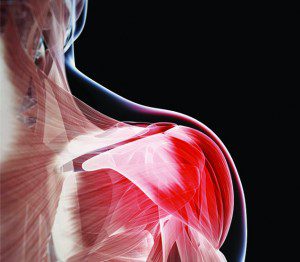By Jay Weitzner, MS, MATs, RTS


Let’s be fair here, there are times when we do know the cause of our physical complaints. Those times belong to the “obvious” category. That category almost exclusively includes impact injuries, such as slamming your leg into a table or stepping on unstable ground and rolling your ankle. Although those events still may not explain why weeks or sometimes months or years later your mobility hasn’t returned or maybe things just don’t feel like they did before the accident.
We need a new way to understand our bodies and what we feel so we can get back to feeling better faster. At the same time, it would be great to find solutions to these problems that not only relieve the symptoms we feel, but also keep them from coming back as quickly, frequently or intensely. That new “way” of looking at things is called Muscle Activation Techniques, or MAT.
MAT looks at the body in a very different and unique way. With MAT we are looking to uncover, and treat the cause of the symptoms people feel. The cause is simple, yet very different from what we are used to thinking. Why can you do something and not get hurt and then at some point you do? The answer is because when you got hurt, one or more of your muscles were not working. They were literally not contracting. That means that they were not able to handle the forces placed on your body and therefore, those forces went to other parts of your body. It is those forces which were not taken up by the inactive muscles that cause the symptoms we all feel.
So what happens when that force isn’t taken up by the muscles that don’t work? Sometimes other muscles have to deal with the forces and they can’t handle it. That’s when you feel the “strain” or the “pull”. Other times that force goes to joints and we get joint pain. Other times it goes to tendons and we get tendonitis. If it’s been happening for a long enough time we may wear away our cartilage (arthritis), or we may develop a bone spur. Either way, these symptoms are very frequently the result of forces going where and when they shouldn’t. Just think about a car with 1 out of 4 shocks not working. Either the 3 working shocks have to handle the forces and wear away faster or they can’t handle the forces and other parts of the car get beat up. Essentially, with MAT and this new way of thinking, whenever you feel a symptom, you know that the area you are feeling it in is taking on too much force, and somewhere else in your body muscles are not working to absorb that force.
MAT allows us to better understand and deal with a huge array of problems. It lets us understand that tight muscles are tight not because something is wrong with them, but rather because other muscles are not working. Activate muscles and the tight ones let go. MAT lets us address symptoms from yesterday to 50 years ago. It lets us help those that are putting very intense demands on their bodies like professional athletes all the way to sedentary, non-exercisers. Finally, we have a new way to help people and a new option for those that have tried “everything”
 Southwest Florida's Health and Wellness Magazine Health and Wellness Articles
Southwest Florida's Health and Wellness Magazine Health and Wellness Articles
